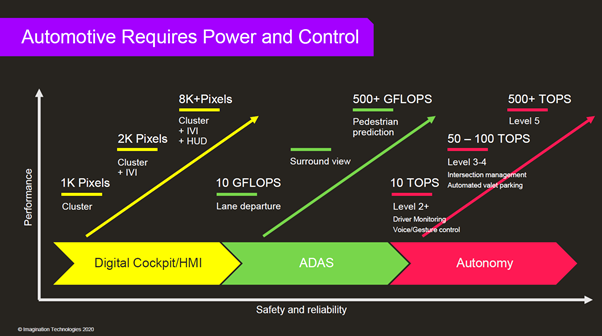AUTOMOTIVE NETWORKING: WHY DATA IS NOW THE LIFEBLOOD OF THE CAR
Across the automotive industry, car companies are increasingly dependent on electronic components, both to keep manufacturing costs down and to add new features through technological advancement – from advanced graphics processing to automotive safety, to full self-driving capabilities.
However, with this increased digitisation comes an increase in complex data. From engine telematics to the most futuristic advanced driver-assistance systems (ADAS) and autonomous vehicles, sensor data now controls everything from adaptive cruise control to automatic braking, to self-driving AI algorithms. As such, data, not petrol, is becoming the lifeblood of the car, with internal vehicle connectivity playing a more vital role than ever before.
This information needs to be in the right place at the right time because even a fraction of a second’s delay or the corruption of a single data packet can spell disaster. However, moving this information around the vehicle, even in its simplest form, is a challenge and up to now, there has been no standard way of doing so. This is why over the last 40 years, many in-vehicle automotive connectivity systems have been established. While some of these networking standards have been designed purely for the automotive environment, others are global standards, used in everything from printers to PlayStations.
It’s not just the importance of the data, it’s the amount of it. There is now an order of magnitude more data flowing around the vehicle than ever before. And as we go beyond relatively simple tasks such as displaying information to ADAS and self-driving tasks, the amount of comp`ute power needed in the vehicle rapidly increases.

As these ADAS features increase in sophistication and capability there are going to be a huge number of individual sensors creating this data. For a fully autonomous vehicle, there can be up to 32 “full HD” and above cameras in the front bumper alone. All this information creates a challenge in terms of volume with a potential need for over 400Gbps of bandwidth – a figure that exceeds the speed of most people’s home broadband in the UK.
Data, not petrol, is becoming the lifeblood of the car.
It also creates a situation where the networking and connectivity requirements become more complex, with hundreds of data feeds routing into dozens of compute nodes in the car, increasing the potential of data becoming lost or becoming corrupted. To remove this risk, just like any home or business network, in-car networking requires a robust and reliable router or switch to manage and control data flow.
However, unlike the home and the office, the routers and switch in a vehicle carries information that if incorrectly transmitted, could lead to accidents. With this in mind, an automotive router needs to be developed to ISO 26262, the safety standard for electronics in automotive, that identifies the six Automotive Safety Integrity Levels (ASILs) from Level A to Level D, with the latter for the most demanding safety level. Our Ethernet Packet Processors for automotive is developed for ISO 26262 and ASIL-B, as is our automotive-specific IMG BXS GPU. With the built-in redundancy required in these standards, dropped data can be resent instantly, drastically reducing the odds of a transmission error.
Related Articles
What Are The Connectivity Requirements For AI In Autonomous Vehicles?
Related Posts
Beyond HMI and graphics – why GPUs matter for autonomy
Making surround-view for cars smarter and safer
Imagination and Humanising Autonomy Part 1: The path to safer roads
Why we’ve created a safety-critical driver for automotive GPU acceleration
Related News
Imagination Joins Baidu PaddlePaddle “Hardware Ecosystem Co-Creation Program”
Imagination launches RISC-V CPU family
Imagination launches IMG Labs to create breakthrough technologies
